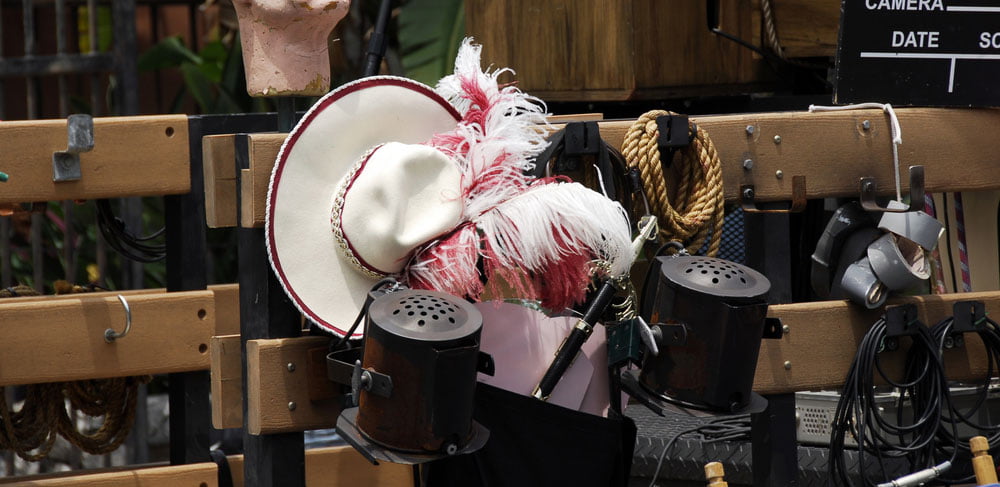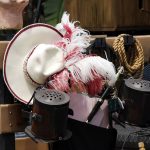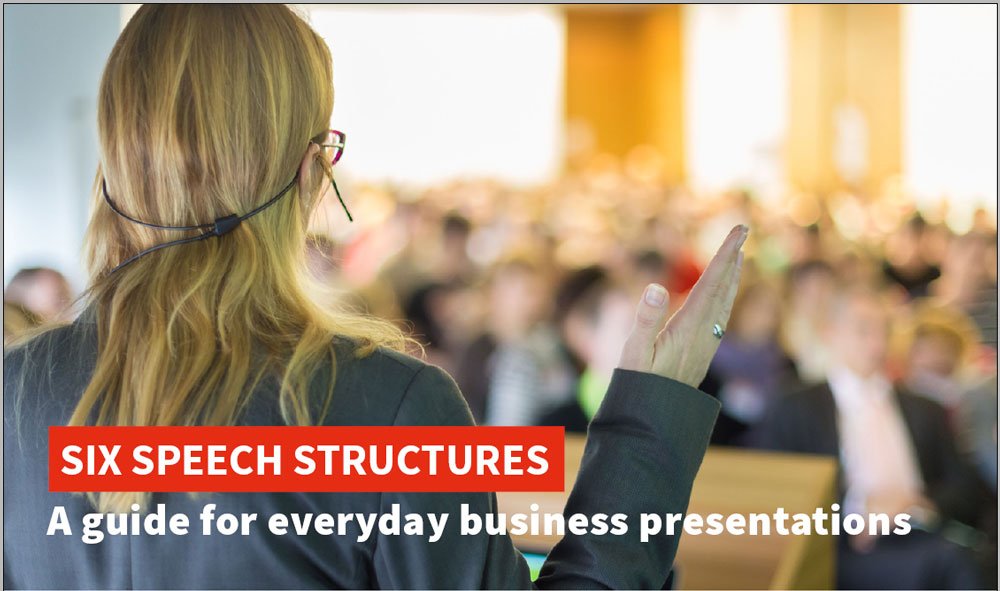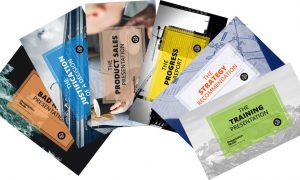How to “Prop Up” your Next Presentation


What is a prop?
The word “prop” comes from the term “theatrical property”. If you watch a play, props are objects used by actors on stage to add realism to the story and to help advance the narrative. Common props that are used in a play include tables, chairs, lamps, umbrellas. The list goes on and on.
In a presentation, props are objects that the speaker uses to enhance the impact of a presentation. The size of the prop is limited only by the size of the stage. Most props are small enough to be handled by the presenter. Famous examples include the times when Steve Jobs unveiled the latest iPhone or MacBook. However, props can be large such as when Elon Musk unveil the latest Tesla model.
Slide presentations such PowerPoint, Keynote and Prezi are also props; however, they are such a specialized form of prop for presentations that they deserve separate consideration and will not be discussed in this post. For more on slide presentations, please click here.
How do props help a presentation?
The well-timed use of a well-chosen prop can make a big impression on the audience. Props can help a presentation in several ways:
- They can make a point concrete.
- They can have an emotional impact.
- They can be effective metaphors.
- They can inject humour into a presentation.
- They focus the audience’s attention and interest.
- They are memorable.
In their book Switch, Chip and Dan Heath tell the story of Jon Stegner, an employee at a large manufacturing company who wanted to show executives the enormous amount of money that was wasted annually because of poor purchasing habits. Stegner believed that the company could save around $1 billion over five years if the company changed its purchasing process. In order to change the process, Stegner had to get the company’s executives to believe in the concept. And for the most part, they didn’t.
Stegner needed a compelling example of the company’s poor purchasing habits. So he got an intern to investigate one item that the company purchased: work gloves, which the workers in the company’s factories wore. The intern found that the company’s factories were purchasing 424 different kinds of gloves from different suppliers and for different prices, even for the same pair of gloves.
From a presentation viewpoint, what Stegner did next was brilliant. He had the intern collect one sample of each of the 424 different types of gloves and tag each with the price the company paid. The gloves were then brought to a boardroom and piled up on the conference table. Stegner invited all the presidents of the company’s division presidents to come visit his “Glove Shrine”. In their book, the Heath brothers write:
What they saw was a large expensive table, normally clean or with a few papers, now stacked high with gloves. Each of our executives stared at this display for a minute. Then each said something like, “We really buy all these different kinds of gloves?” Well, as a matter of fact, yes we do. “Really?” Yes, really. Then they walked around the table…. They could see the prices. They looked at two gloves that seemed exactly alike, yet one was marked $3.22 and the other $10.55. It’s a rare event when these people don’t have anything to say. But that day, they just stood with their mouths gaping.
The gloves exhibit soon became a traveling road show, visiting dozens of plants. The reaction was visceral: This is crazy. We’re crazy. And we’ve got to make sure this stops happening. Soon Stegner had exactly the mandate for change that he’d sought. The company changed its purchasing process and saved a great deal of money.
Such is the power of a well-used prop.
Ten tips for using props
1) The prop must be relevant to the message
It might seem axiomatic, but without question, this is the most important rule for using props. If the prop does not, in some way, contribute to the objective of your speech or presentation, you should not use it.
Jill Bolte Taylor used a human brain during her amazing talk about the massive stroke that she had and the insights into life that she gained from it ( at 2:30-3:45 in the video below). The prop was effective because it gave the audience a very visual, very memorable sense of the basic structure of the brain, which was important for the rest of the talk.
2) Make sure the audience can see the prop
The larger the audience, the more care you must take to ensure that everyone can see the prop. It is frustrating for those who are sitting at the back if they cannot see it. Even for small audiences, a speaker must be sure that people can see the prop. This means holding it up or setting it up high enough and for long enough so that people can get a meaningful look.
In this talk by Bruce Aylward, which I have analyzed on my own blog, Bruce used a very small prop in front of a very large audience to open his talk (0:35 – 0:55). However, the prop worked because a video of Bruce was being projected on a large screen for the audience and Bruce held up the prop long enough so that people could get a good look.
3) Use the right number of props
If you use more props than is appropriate for your presentation, there is a risk that it will come across as Vaudevillian rather professional. There is no “right” number of props to use, though in many cases, one will suffice. It depends on a number of factors such as the amount of time you have, the nature of the props, whether the props are related, etc. No two speeches are the same and each requires its own “recipe” to turn out right.
Daniel Kraft gave a terrific presentation in which he conveyed an incredible amount of information about harvesting bone marrow. In addition to video and PowerPoint slides, Kraft used five props in four minutes. But he used them well.
4) Make sure the prop works
The more complicated the prop, the greater the chance that something can go wrong. Test it, test it and then test it again beforehand. This is especially important if the prop forms a key part of the presentation; for example, if it is an invention that you are revealing to the public.
In this TED Talk, Markus Fischer showed his audience (starting at 2:00) a robot that he and his team invented. It looks and flies like a real bird and is truly remarkable. There is a lot that could have gone wrong with this prop (including crashing into the audience!) but it worked like a charm (twice). I have no doubt that Markus and his team tested it over and over before the presentation.
5) Have a backup in case the prop doesn’t work
Many props are simple items with few or no moving parts. The chances that they will not work are next to zero. But what about complicated props like the robotic bird above? Or what if you forget or lose your simple prop? Can you adjust? Do you have a backup plan?
In the video above, everything worked well. But to be on the safe side, I would have had a video of the robotic bird flying just in case something went wrong with the live presentation. Perhaps Markus Fischer did have such a video but he didn’t need it.
6) Be completely comfortable with the prop
The speaker must be comfortable in handling the prop from start to finish. This means revealing the prop, handling it, operating it (if applicable), putting it away and, of course, speaking about it.
For a memorable example of the need to be comfortable with a prop, this speech by Chris Bishop certainly fits the bill. The prop in question is fittingly referred to as the “swinging ball of death” and if you watch the short video below, you’ll know why.
7) Where possible, keep the prop hidden until you need it
This is more easily done with small props that you can keep in your pocket or behind the lectern. However, it might be possible with larger props if you have a big stage with a back curtain or wings. There are two main advantages with keeping the prop hidden: it will not distract the audience while you are talking about something else; and the impact of the prop will be greater if it is only seen when you reveal it.
When I participated in the 2009 Toastmasters District 59 Humorous Speech Contest, my speech was a good-natured spoof about men evaluating their wives’ ability to argue. At one point, I talked about how when they yell at their husbands, wives have to remember not to go on and on. In Toastmasters, a red card is universally recognized as the sign that you have to wrap up your speech. I found a way to incorporate this into the speech (5:30 – 5:40). I used a red card as a prop, but kept it hidden until I needed it. The card had the intended effect.
8) If you talk about the prop before showing it, build a sense of anticipation before the audience sees it
Doing so will focus the audience’s attention and give the prop greater impact when it is revealed. Of course, this requires the right choreography and the prop needs to live up to the expectation that you create; however, when done well, the effect is powerful.
A classic example of this technique was when Steve Jobs revealed the MacBook Air for the first time. Note how he used the comparison with the Sony notebook to build up interest and expectation. And having the MacBook Air in “one of those envelopes we’ve all seen floatin’ around the office” was a stroke of genius.
9) Be creative with your props
We have written elsewhere and on Presentation Guru about the importance of being creative when it comes to preparing a presentation and the same holds true for props. With thousands of objects from which to choose, use your imagination and try to think of unusual props that would have a real impact on your audience. One idea is to think about metaphors or analogies for the points you are trying to make and then look for the relevant item. It might be as close as your kitchen cupboard.
I thought that Bill Gates’ releasing a bunch of mosquitoes in the TED auditorium while delivering his talk about malaria was brilliant (5:10 – 5:35). It was creative, unexpected and definitely grabbed the audience’s attention.
10) Put the prop away when you are finished with it
Unless you will need to refer to the prop again, I recommend putting it away (or at least to the side) once you are finished using it. Otherwise, the prop could be a distraction for the rest of your talk. In most of the videos above, the speakers either put the props away, put them to the side or had assistants take away the props when they were finished with them.
The next time you have a speech or presentation and are looking to add a little “oomph”, consider using a prop. If you do, the tips above will help you get the most out of it.


















Richard I. Garber
2nd May 2017 at 2:17 pm
Excellent post! Don’t forget there also are compact, inexpensive inflatable props you can get and use
John Zimmer
24th September 2018 at 6:18 pm
Belated thanks for the comment, Richard. I only just saw it. And yes, inflatable props are a great idea.
Millie Hue
22nd September 2018 at 3:26 am
I appreciate that you suggested holding the prop up or making sure that it is elevated so that the audience can see it. I will share this tip with my sister since she plans to use prop money for the event that she will be hosting. It will be about handling money for college student since she was successful in her 20s even if she was a new graduate by that time.
John Zimmer
24th September 2018 at 6:19 pm
HI Millie and thank you for the comment. Best of luck to your sister for her event!